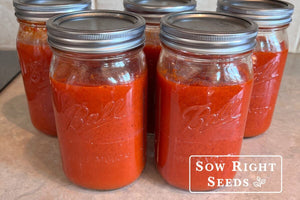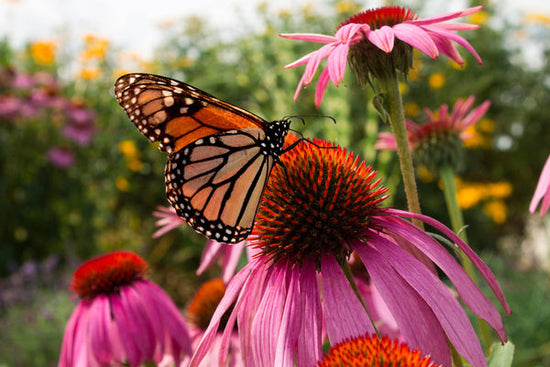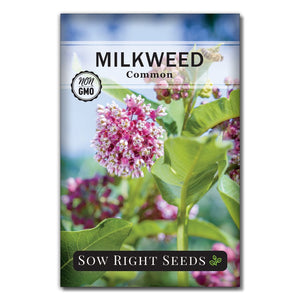Flowers for Pollinators: Make Your Garden Irresistible to Birds, Bees, and Butterflies
Pollinator gardeningWant more pollinators to visit to your garden? The most important thing you can do is simple: plant more flowers!

Bees, butterflies, birds, and other pollinators that visit your garden will do important work helping your plants stay healthy and productive. Understanding how flowers help these pollinators can give you some insight into what flowers are best for your garden.
So what flowers are irresistible to pollinators?
Focus on pollen!
Pollen is the microscopic male part of the flower’s reproductive cycle and is a primary source of protein for bees and other pollinators. Pollinators help to move this pollen around from flower to flower.
Some plants are self-pollinating or wind-pollinated, much to the dismay of humans with allergies. However, even those plants that don’t depend on birds or insects can benefit from the genetic diversity of cross-pollination.
Diversity is important.
Just like you need a well-rounded diet, so do our friendly local pollinators. Flowers that have different colors, shapes, scents, and heights will attract different species.
Having a variety of blooming times will keep them coming back to your garden throughout the growing season.

Focus your efforts.
Even if you don’t have a lot of space, consider creating little mini-gardens or pockets where pollinators can visit. Concentrating the plants together helps them to find the food you’ve so thoughtfully given them.
Don't forget about nectar!
Nectar is a sugary liquid produced by some flowers. Hummingbirds love the stuff, and honeybees transform it into honey.
Many of our favorite herbs are good nectar plants. Rosemary, basil, lavender, mint, oregano, lemon balm, and chives are all great choices.
Tubular-shaped, brightly colored flowers hold a lot of nectar. Wildflower mixes contain many of these, like asters, foxglove, verbena, phlox, and more. Planting these mixes also helps you to provide species that the local pollinators are used to.

Plants also provide seeds for wildlife.
Seeds bring a wide variety of birds to your garden. Black-eyed Susans, coneflowers, sunflowers, and cosmos are all excellent choices for attracting songbirds. Coreopsis flowers have nectar and pollen for pollinators. Their seeds are also a favorite for birds.
Just make sure you remember to leave the flowers to mature and dry so that the birds have a rich diet to enjoy.
Keep the flowers blooming.
Pollinators need to forage constantly, so make sure they’ve always got access to food sources. Trees and shrubs can provide a backdrop for annuals and perennials you grow from seed.
When you plan, consider when different flowers will bloom and provide nectar and pollen. Hummingbird feeders or seed feeders can help to supplement the diets of birds, too.

If you want birds, bees, and butterflies, fill your garden with flowers throughout the growing season. In no time, your yard will be bustling with activity from your new friends.
The Best Flowers for Pollinators
When choosing the best flowers for pollinators, remember to focus on pollen nectar as they are the food sources. Then, have a diversity of colors, shapes, and heights as well as bloom times. Also, create areas where there are lots of flowers together so the pollinators can easily find them.
When you use these principles to choose flowers, you'll have the right mix to attract a variety of pollinators.
Resources:
1 comment
Popular Posts
-

Fresh Homemade Tomato Sauce Recipe for Canning
-

From Fuzzy Leaves to Golden Spires: How to Grow Mullein from Seed







best seeds to plant for honey bees and that are deer resistant
Leave a comment